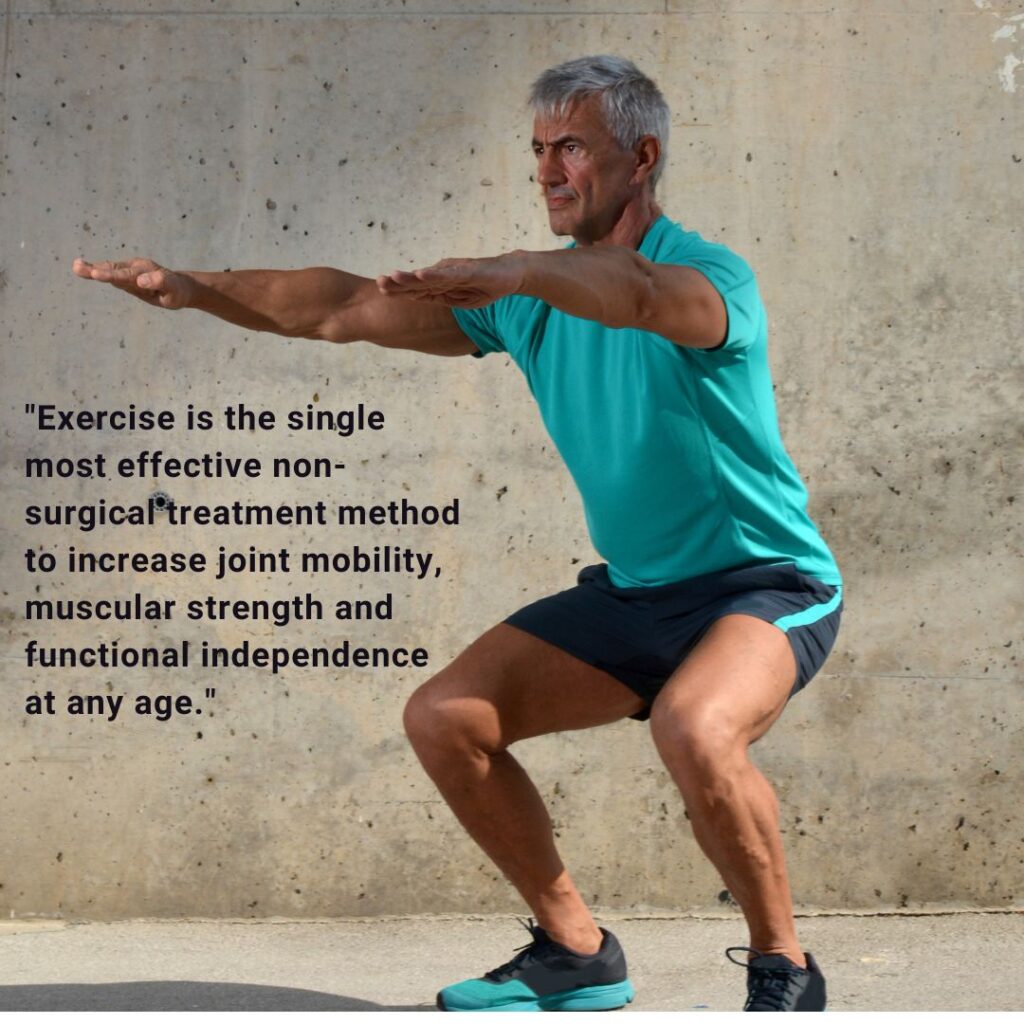The Importance of Physiotherapy – Before Considering Surgery
The content on this webpage was generated with AI technology for educational purposes only and was reviewed by Alberta Physiotherapist Terry Kane, the owner of OrthopaedicsCanada.com prior to publication. If you have any comments or suggestions, please contact Terry at terry@terrykane.ca
 Bone and joint injuries can be debilitating, affecting daily activities, mobility, and quality of life. When faced with chronic pain or an injury, surgery might seem like the most definitive solution. However, pursuing non-surgical treatments first is often the wiser course of action. Non-invasive approaches not only help patients avoid the risks and recovery time associated with surgery but also address the root causes of pain, promoting long-term health and mobility.
Bone and joint injuries can be debilitating, affecting daily activities, mobility, and quality of life. When faced with chronic pain or an injury, surgery might seem like the most definitive solution. However, pursuing non-surgical treatments first is often the wiser course of action. Non-invasive approaches not only help patients avoid the risks and recovery time associated with surgery but also address the root causes of pain, promoting long-term health and mobility.
This article explores why non-surgical treatments should be the first line of defense for bone and joint pain.
The Benefits of Non-Surgical Treatments
- Lower Risk of Complications Surgery, even when minimally invasive, comes with inherent risks such as infection, blood clots, and adverse reactions to anesthesia. Non-surgical options, such as physical therapy or injections, are far less risky, making them a safer starting point for most patients.
- Shorter Recovery Time Recovery from surgery can take weeks or even months, with downtime that may disrupt work, family life, and hobbies. In contrast, non-surgical treatments typically require little to no downtime, allowing patients to maintain their routines while working toward recovery.
- Cost-Effectiveness Surgical procedures are often expensive, especially when factoring in hospital stays, anesthesia, and follow-up care. Non-surgical treatments are generally more affordable and accessible, reducing the financial burden on patients.
- Focus on Holistic Healing Non-surgical interventions often emphasize improving overall health and function. For example, physical therapy not only strengthens the injured area but also improves posture, flexibility, and biomechanics, preventing future injuries.
Effective Non-Surgical Treatments for Bone and Joint Pain
Physical Therapy
Physical therapy is a cornerstone of non-surgical treatment. By employing targeted exercises and stretches, therapists help patients regain strength, improve joint stability, and restore range of motion. Techniques like manual therapy and hydrotherapy can further relieve pain and inflammation.
Medications
Over-the-counter anti-inflammatory drugs (e.g., ibuprofen) and prescription medications can reduce pain and swelling, helping patients manage their symptoms while other treatments take effect.
Injections
Corticosteroid injections and hyaluronic acid injections are commonly used to alleviate joint pain and inflammation. These treatments provide temporary relief, giving patients the ability to participate in physical therapy or other long-term solutions.
Bracing and Orthotics
For conditions such as osteoarthritis or ligament injuries, braces and orthotic devices can provide support, reduce strain, and enhance mobility without requiring invasive intervention.
Lifestyle Modifications
Weight management, proper nutrition, and low-impact exercises like swimming or yoga can reduce stress on joints and promote overall musculoskeletal health.
Alternative Therapies
Acupuncture, chiropractic care, and massage therapy are increasingly recognized as valuable non-surgical options for managing bone and joint pain. These therapies focus on alleviating pain, improving circulation, and supporting the body’s natural healing processes.
When Is Surgery Necessary?
While non-surgical treatments can significantly reduce pain and improve function for many patients, there are cases where surgery becomes the best option. These include severe injuries, such as complex fractures or complete ligament tears, or conditions like advanced arthritis where the joint is significantly damaged.
Even in such cases, pursuing non-surgical treatments beforehand can still be beneficial. Patients who engage in physical therapy before surgery may experience better outcomes and a faster recovery due to improved strength and flexibility.
The Role of Patient Education
An informed patient is better equipped to make decisions about their care. It is essential for healthcare providers to educate patients about the range of non-surgical options available, their benefits, and how they can complement or even replace surgical interventions. This empowers patients to take an active role in their recovery and choose treatments that align with their goals and preferences.
Conclusion
While surgery can be a life-changing solution for severe bone and joint issues – unlike urgent emergency surgery – elective surgery is not considered the first resort.
Non-surgical treatments offer a safer, less invasive, and often highly effective way to manage pain, heal injuries, and restore function. By prioritizing these options, patients can avoid unnecessary risks and downtime while promoting long-term health and well-being.
If you’re experiencing bone or joint pain, consult with a healthcare professional about non-surgical treatments. With the right approach, you may find lasting relief without ever needing to enter an operating room